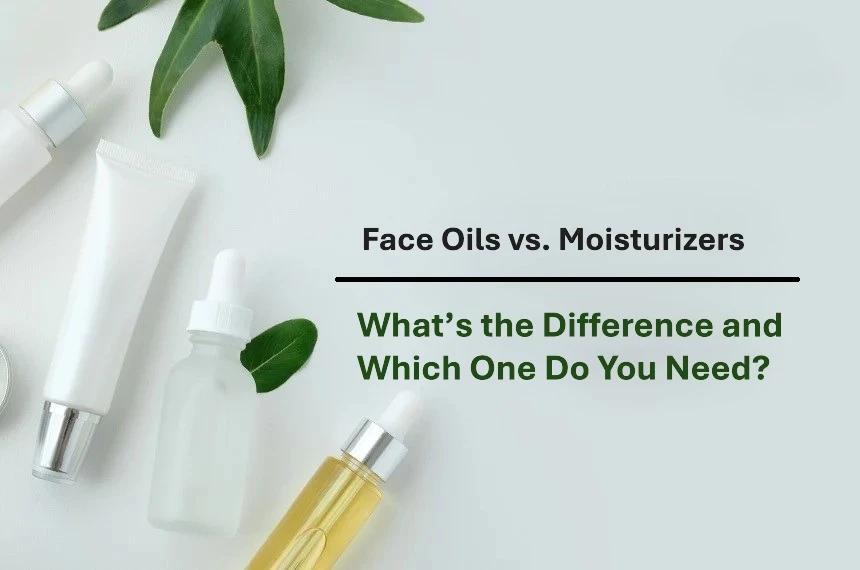Face Oils vs. Moisturizers: What’s the Difference and Which One Do You Need?
What’s the Difference Between Face Oils and Moisturizers?
Face oils and moisturizers both play key roles in keeping skin healthy, nourished, and hydrated—but they are not the same. Understanding the difference between the two helps you build a skincare routine that meets your specific skin needs. While they can sometimes overlap in function, face oils and moisturizers serve different purposes and work best when used together in the right order.
What Are Moisturizers?
Moisturizers are products designed to hydrate the skin and prevent water loss. They are usually emulsions, meaning they are made up of both water and oil components. A good moisturizer typically contains three types of ingredients:
-
Humectants – Like hyaluronic acid and glycerin, these attract water into the skin.
-
Emollients – Like squalane or shea butter, these smooth and soften the skin.
-
Occlusives – Like petrolatum or dimethicone, which form a barrier to lock in moisture.
Moisturizers are ideal for replenishing water content in the skin and supporting the skin barrier, making them essential for all skin types—even oily or acne-prone skin.
What Are Face Oils?
Face oils are oil-based products made from plant oils, essential oils, or synthetic oils. They do not contain water, and their main function is to nourish and seal in moisture. Face oils are rich in fatty acids, antioxidants, and vitamins that support skin health and help create a smooth, radiant complexion.
They don’t directly hydrate the skin (since they lack water), but they help trap water in the skin, especially when applied after a water-based product like a serum or moisturizer. Some common face oils include:
-
Jojoba oil – Similar to skin’s natural sebum.
-
Argan oil – Rich in Vitamin E and good for dry skin.
-
Rosehip oil – High in antioxidants and great for aging skin.
-
Tea tree oil – Has antimicrobial properties, suitable for acne-prone skin (in small, diluted amounts).
Key Differences
| Feature | Moisturizer | Face Oil |
|---|---|---|
| Main Function | Hydrates skin and locks in moisture | Seals in hydration and provides nourishment |
| Contains Water | Yes | No |
| Texture | Creamy, lotion-like | Oily, slick |
| Ideal For | All skin types | Dry, dehydrated, or mature skin |
| Best Applied When | After serums, before oils | Last step to seal in moisture |
Should You Use Both?
Yes—especially if you have dry, dehydrated, or mature skin. The ideal routine is to use a moisturizer first to hydrate, and then apply a face oil to lock in that hydration. Using only oil without a water-based product underneath may leave skin feeling greasy but not truly moisturized.
Conclusion
Face oils and moisturizers are different in function and formulation. Moisturizers bring hydration to the skin, while face oils provide nourishment and help seal in moisture. They aren’t interchangeable, but together, they can significantly improve your skin's texture, glow, and resilience. Knowing when and how to use each can make your skincare routine more effective and personalized.

Related Blog
What Causes Oily Skin and Can It Be Managed Naturally? Exploring Root Causes and Gentle Solutions
Aug 2, 2025 by Admin
General
What Are the Signs That You Have Sensitive Skin? Key Symptoms to Help You Identify This Delicate Skin Type
Aug 1, 2025 by Admin
General